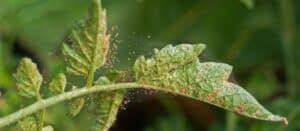In New Jersey and Eastern Pennsylvania, protecting trees and shrubs from insect pests without harmful pesticides is a top priority for many homeowners and gardeners. Fortunately, nature has provided us with some tiny allies – beneficial insects.
These insects help control pests naturally and organically and contribute to the overall health and balance of local ecosystems by increasing diversity, creating natural, more organic environments, and by facilitating natural predator-prey relationships.
So, if you’ve been looking for natural pest control around your New Jersey or Eastern Pennsylvania property, look no further. This article will introduce you to five amazing beneficial insects to help protect your plants, shrubs, and trees:
- Ladybugs
- Praying Mantis
- Lacewings
- Hoverflies
- Parasitic Wasps
Get ready to meet these pint-sized defenders of plant life!
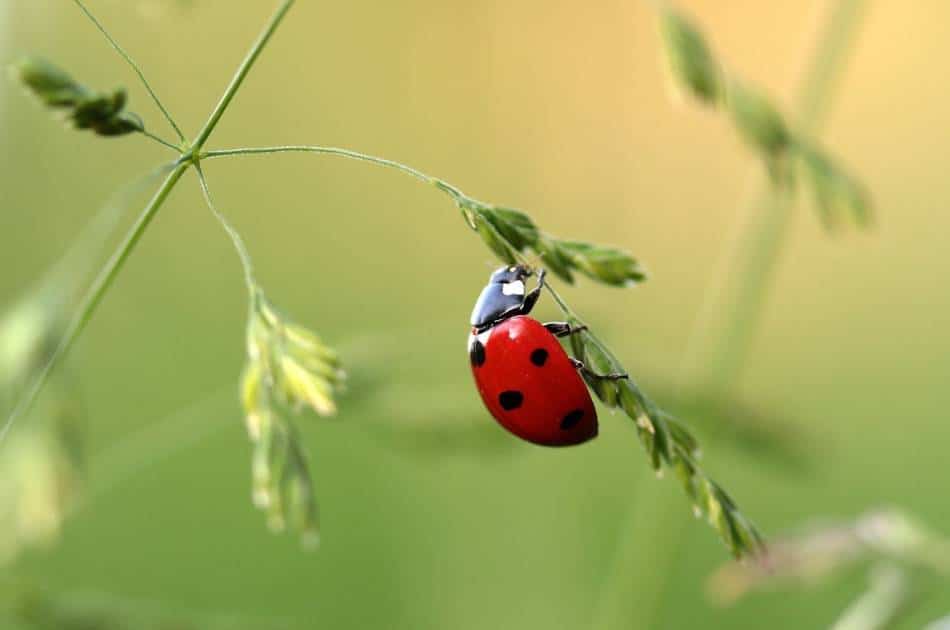
Ladybugs are a welcome sight in the yard due to their attractive appearance and their ability to deliver organic pest control.
1. Ladybugs
Ladybugs are beneficial insects that can help protect your trees and shrubs. These small, colorful insects are known for their distinctive red or orange bodies with black spots. Ladybugs are not only pleasing to the eye, but they also play a crucial role in controlling pests that can harm your plants.
One of the main benefits of ladybugs is their voracious appetite for aphids. Aphids are tiny insects that feed on the sap of plants, damaging leaves and stems. A single ladybug can consume sixty aphids in a single day, helping to keep their population in check and preventing further damage to your trees and shrubs.
In addition to aphids, ladybugs feed on pests such as mites, scale insects, and mealybugs.
Did You Know?
Buying commercially available ladybugs for natural pest control is a bad idea. Entomologists believe they are ineffective for biological pest control and can carry pathogens. Additionally, they often arrive dead!
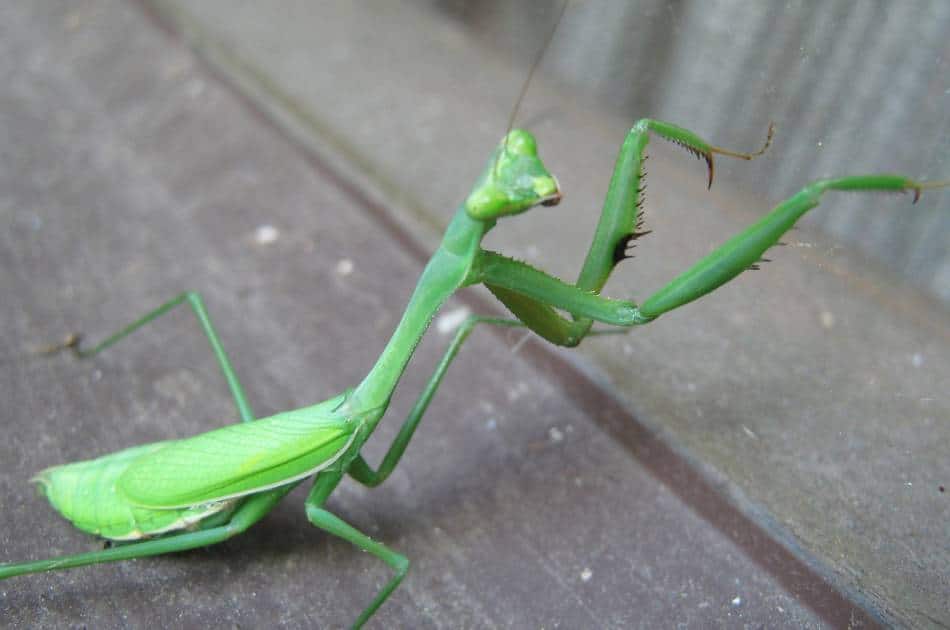
The praying mantis is another beneficial insect that’s a welcome sight on any New Jersey or Eastern Pennsylvania property.
2. Praying Mantises
Praying mantises are effective predators of insects and other arthropod pests. Skilled hunters, praying mantises lie in wait, sitting motionless, camouflaged among the foliage. When an insect pest gets close enough – SNAP – they use their lightning-fast spiked forelegs to snatch and devour their prey.
Praying mantises have a big appetite and help keep New Jersey and Pennsylvania moth, mosquito, cockroach, fly, and aphid populations under control organically.
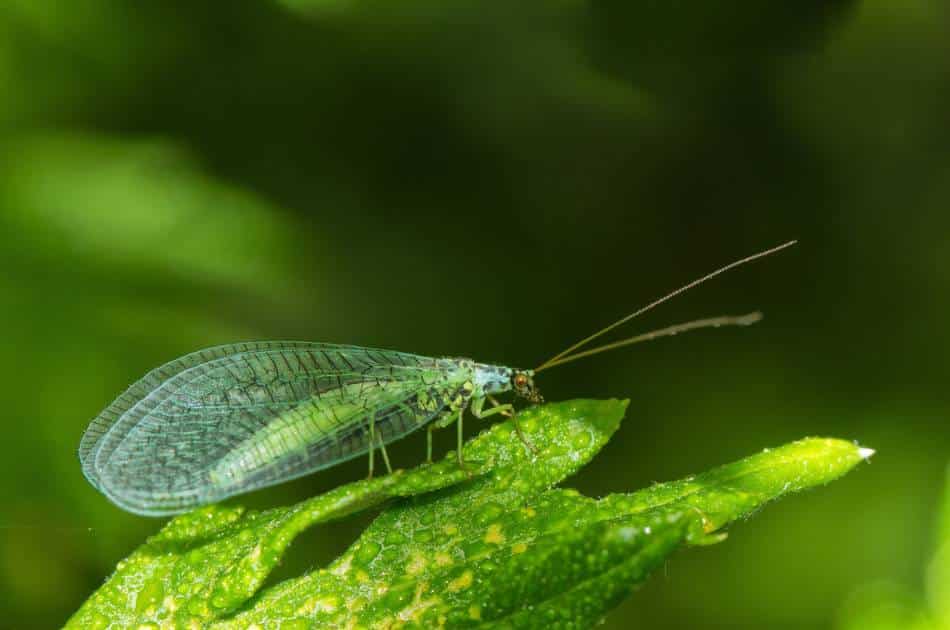
The lacewing is a voracious aphid predator.
3. Lacewings
Lacewing larvae, also known as aphid lions, are exceptionally skilled at hunting and devouring their prey. They use their large jaws to inject paralyzing venom into their victims before sucking out the fluids.
These delicate creatures have transparent wings and feed on various insects, including aphids, mealybugs, and mites. They are especially effective at controlling populations of these pests due to their voracious appetite, eating as many as 1000 aphids per day!
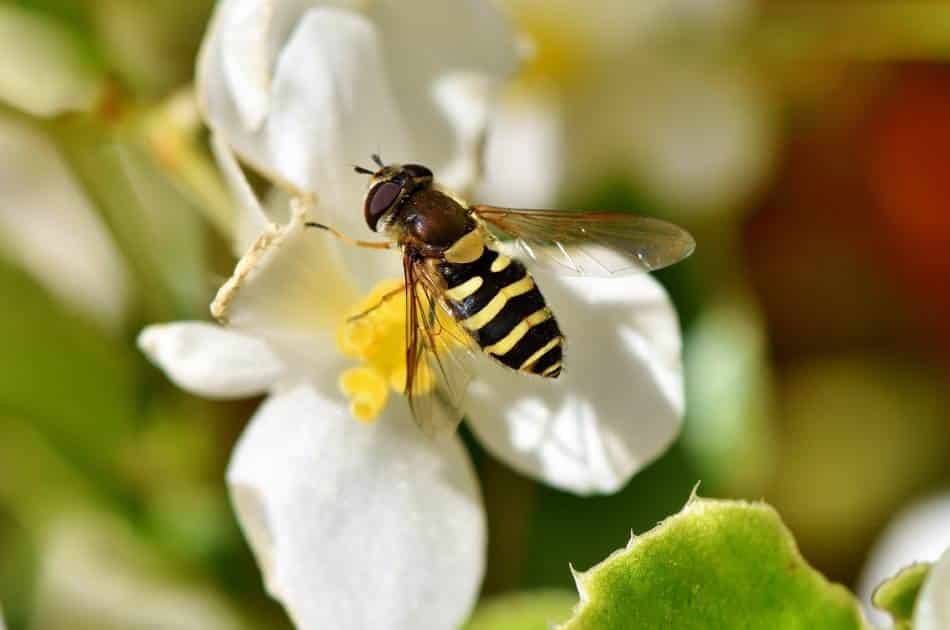
That’s not a wasp despite what it wants you to think. This hoverfly can’t sting, but it can control pests that want to attack your shrubs, trees, and other plants.
4. Hoverflies
These striped, petite, swift-moving, insects resemble small wasps, but they possess a distinctive characteristic of hovering near plants or individuals while closely inspecting their surroundings with their large brown eyes. They are commonly referred to as flower flies or syrphid flies. Though they sometimes land on people, attracted by the salty sweat on the skin, it’s important to note that they do not sting.
Mature hoverflies primarily sustain themselves by feeding on flower nectar, making them valuable contributors to pollinating certain crops. However, their true significance lies in their larval stage as they scour the undersides of plant leaves in search of aphids and other small insect pests.
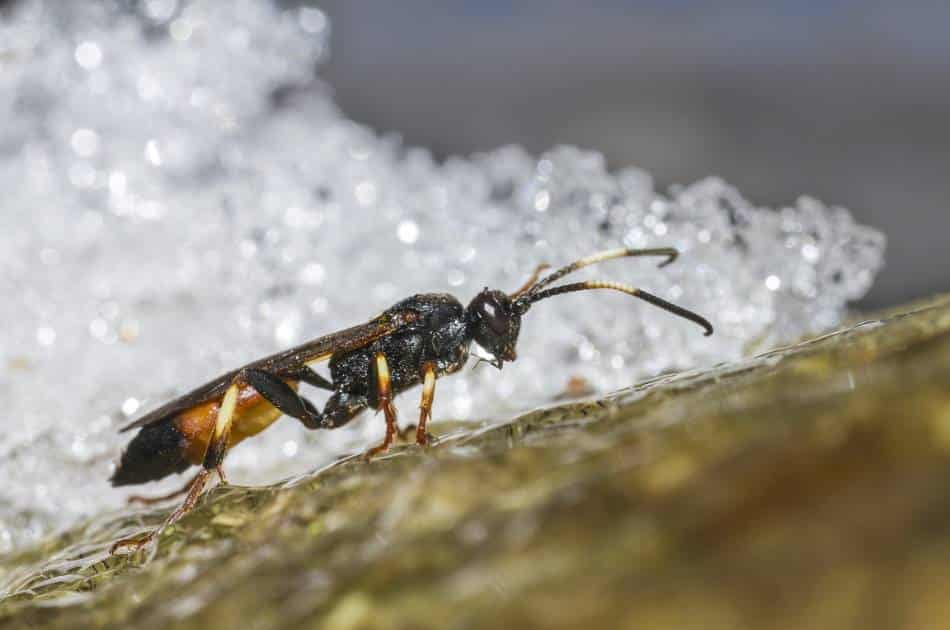
New Jersey and Pennsylvania have several different parasitic was species including braconid, chalcid, and the ichneumon wasp (pictured above).
5. Parasitic Wasps
New Jersey and eastern Pennsylvania are home to numerous species of parasitic wasps, but three specific types are particularly prevalent and beneficial to have in your garden: braconid wasps, chalcid wasps, and ichneumon wasps.
Parasitic wasps differ distinctly from the larger social wasps that construct sizable, papery nests and inflict painful stings upon us. These parasitic wasps serve as pollinators and offer a valuable service in the form of natural pest control within our gardens.
Unlike traditional parasites, these wasps act as beneficial predators. They seek out insect pests, such as aphids and cutworms, and utilize them as hosts to incubate their eggs. Upon hatching, the wasp larvae eat their host from the inside.
Some Frequently Asked Questions About Beneficial Insects
Are ladybugs, praying mantises, and lacewings harmful to humans or pets?
Ladybugs, praying mantises, and lacewings are not harmful to humans or pets. These beneficial insects help control pest populations in gardens.
Ladybugs feed on aphids, praying mantises eat a variety of insects, and lacewings prey on aphids, mites, and other pests. While they may bite if handled, their bites are harmless and usually do not cause serious reactions.
As long as they are not ingested, these insects pose no threat to humans or pets.
How long do ladybugs, praying mantises, and lacewings typically live?
Ladybugs, praying mantises, and lacewings typically have different lifespans. Ladybugs live for about one year while praying mantises can live up to six months. Lacewings have the shortest lifespan, usually living for only a few weeks.
It’s important to note that these insects play a crucial role in controlling pests and protecting trees and shrubs. Therefore, having them around is beneficial despite their relatively short lives.
Can ladybugs, praying mantises, and lacewings be used to control pests on indoor plants?
Ladybugs, praying mantises, and lacewings can be used to control pests on indoor plants. These beneficial insects are natural predators of common indoor pests like aphids, mealybugs, and spider mites.
Ladybugs, for example, feed on aphids and can help keep their population in check. Praying mantises and lacewings also prey on various small insects, making them effective pest control options for indoor plants.
Introducing these beneficial insects can be a proactive and eco-friendly approach to managing pests indoors.
Are there any beneficial beetles?
In addition to ladybugs, many ground beetle species (family Carabidae) are considered beneficial. Ground beetles prey on caterpillars, root maggots, snails, and other soil-dwelling insect pests.
What good bug eats mites, mealybugs, and aphids?
Mealybugs and aphids have a number of enemies to keep their numbers in check, including lady beetles, green and brown lacewings, spiders, minute pirate bugs, and larvae of predaceous midges.
Need Some Organic Pest Control?
Call Organic Plant Care today at 908-309-6611. We lead with an organic approach to tree and shrub care, so if you’re looking for advice on beneficial insects or want some natural solutions to your tree and shrub pest woes, OPC is your New Jersey and Eastern Pennsylvania expert!
GET THE LATEST NEWS
Subscribe to the Organic Plant Care Newsletter and get timely and helpful tips and updates monthly.
There's no spam - we promise!





